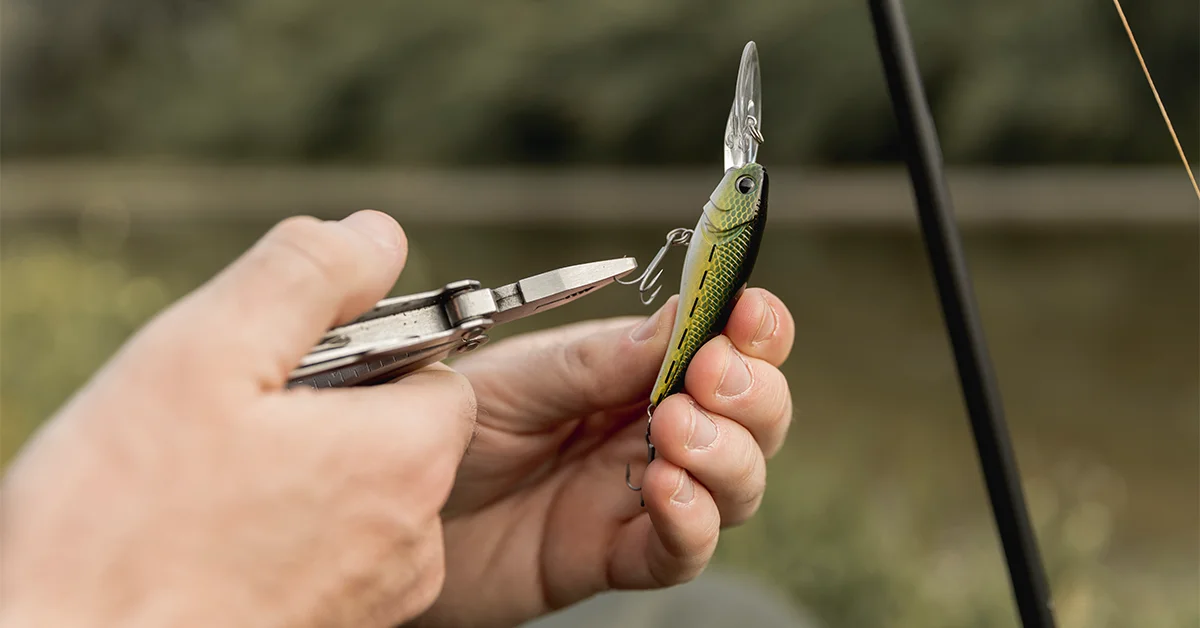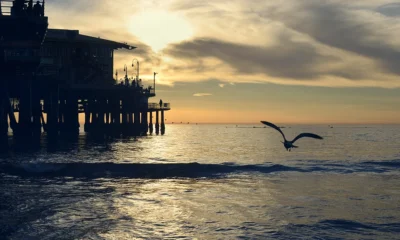BLOG
Whispers Of The Đeman: Echoes From The Forgotten Realm

Imagine standing on the edge of a silent forest at dusk. The wind rustles through the ancient oaks, and you feel—as if from nowhere—a gentle voice brushing your consciousness. It’s a whisper, faint but strangely familiar: The calls. In “Whispers of the Đeman: Echoes from the Forgotten Realm,” we embark on a journey into that hauntingly beautiful unknown. This isn’t just another fantasy tale—it’s a soul-stirring exploration of forgotten lore, emotional resonance, and the eternal dance between light and shadow. Whether you’re a devoted reader of mythic storytelling or someone seeking a creative spark, this article will guide you through the magic, meaning, and lingering mysteries of the Đeman.
TRENDING
Breaking Down fintechzoom.com Asian Markets Today Updates
What Is The Đeman?
At its heart, the Đeman is a mysterious entity—a guardian of an ancient, hidden realm, a messenger of the forgotten, and a symbol of the unseen forces that shape our world. Often depicted as a soft murmur in dark places, the Đeman represents remembrance, intuition, and the thin veil between worlds. In Slavic-rooted lore, similar spirits serve as guides to lost travelers or boon-bestowers to those who listen. But the is unique, an echo from the world beyond, inviting you to remember, reconcile, and reawaken something deep within.
Origins: Tracing The Echoes Through Time
Mythic Foundations
The concept of a whispering spirit isn’t new—it’s woven into folklore across many cultures. In ancient Slavic tradition, leshy and other spirits haunt forests and glens. The Đeman borrows from this lineage, but introduces a twist: instead of seeking to scare, its whispers offer solace, ancient truths, healing.
Literary Influences
Writers inspired by H.P. Lovecraft or the Brothers Grimm often invoked uncanny whispers. Over time, the Đeman became a literary cipher—an echo of what lies lost in human memory. From Vladimir Nabokov’s ethereal prose to Neil Gaiman’s dreamlike realism, the spirit of the Đeman lives on in modern storytelling.
A Modern Folk Creation
Today, the Đeman thrives in online legend-making. Readers share dreams, poetry, images; some even claim to have heard its faint voice. Social media and collaborative storytelling have turned it into a digital-age myth, growing organically with each telling.
Characteristics Of The Đeman
The Whisper
At the core, the Đeman’s primary mode of communication is—the whisper. It’s not audible in a literal sense, but rather felt: a soft urging, a memory stirred, an intuition awakened. This whisper:
- Reverberates in old places—!ruins, forests, abandoned homes.
- Activates deep memory or forgotten feeling.
- Guides without forcing—like a kind nudge in the right direction.
Gateway to the Forgotten Realm
The “Forgotten Realm” is not another planet—it’s the reservoir of lost stories, unspoken emotions, ancestral knowledge. When the Đeman whispers, it grants brief glimpses: shimmering reflections of another layer of existence, steeped in nostalgia and otherworldly wisdom.
Formless but Present
Few describe the Đeman’s appearance—it’s too elusive. Sometimes it feels like shifting breaths of air, shifting shadows, or a glance of movement from the corner of an eye. Its presence is emotional: comfort, connection, a universe unfolding in silence.
Why The Đeman Matters Today
Healing Through Memory
The Đeman teaches that loss—even forgotten loss—is part of us. By listening to its whispers, we reconnect with buried parts of ourselves—friends we lost touch with, old dreams, childhood whispers, even grief we never processed. That reconnection can be healing and grounding in our busy lives.
Reconnecting with Nature and Place
Your local forest or ancestral home might hold echoes of the Đeman. Paying attention—to creaking branches, shifting light, rustling leaves—can reconnect you with your environment. It becomes living, breathing, full of memory.
Creative Inspiration
Writers, poets, artists—call it a muse if you like—often seek something intangible to spark their work. The Đeman doesn’t give concrete stories; it provides feeling, mood, emotion, a sense of the uncanny. That friction between the seen and the unknown can be powerful creative fuel.
How to Listen for the Đeman
Let’s talk about practical ways to tune in—without awkward incantations or ritual masks.
Create Physical and Mental Space
- Find quiet: a forest trail, a riverside bench, a lone room at sunrise.
- Be present: leave your phone in your pocket, breathe.
- Use an object: a family photo, a river-stone, something meaningful.
- Stay open: wait. Don’t expect fireworks—just gentle stirring.
Notice Sensory Nudges
- Sudden chills or warmth?
- A tune you haven’t heard in years?
- Smell of rain or wood smoke without obvious cause?
- Flashes of memory—someone’s laugh, a moment from childhood?
These are the Đeman’s echoes. Treat them with curiosity, kindness, gratitude.
Record the Whispers
- Carry a notebook or voice memo.
- Jot impressions—“felt weight in chest,” “saw shift in corner of vision,” “heard music (unseen).”
- Over time, patterns emerge—of place, mood, memory.
Respond Through Creation
- Write a poem, draw a symbol, compose a melody.
- Plant a seed, build a stone cairn, offer a quiet blessing.
- Acts of gratitude reinforce the connection and the memory.
Stories: Encounters With The Đeman
The Forest Walker
A woman hiking in Eastern Europe pauses in a clearing at dusk. She feels a breeze that smells of honeysuckle—though none grows nearby. Then she realizes: the air reminds her of summers at her grandmother’s garden, long since sold. Tearful, she stands, remembering. She carved a small wooden token in gratitude, which she later left in the forest. Since then, she’s found new creativity and purpose.
The Urban Artist
A graffiti artist in an alley feels eerie calm at night. A soft voice urges: paint symbols reminiscent of mythic ancestors, not gang tags. The mural transformed the alley into a community gathering point—a place for whispers of forgotten stories made visible.
The Healer & the Stone Circle
A healer travels to an ancient stone circle known for strange effects. She felt electricity in her fingertips and remembered knowledge of herb lore from her grandmother. When she returned home, her practice deepened, infused with ancestral wisdom unlocked by the Đeman’s whisper.
Theology vs. Metaphor: What The Đeman Really Is
Psychological View
Some argue the Đeman is a symbol for subconscious intuition. By tuning into neglected deeper feelings, the whispers are internal—yet they feel magical. Whether or not it’s “real,” experiencing the Đeman can be psychologically enriching.
Spiritual Perspective
Others sense a real spirit—an elemental or ancestral echo. It doesn’t ask for worship—only respect. In this view, the Đeman reminds us that the world is alive, layered, and encoded with meaning if we pay attention.
The Middle Way
Maybe the Đeman is both—a real current in a world we only dimly perceive, and a projection of our desire to belong to something beyond the ordinary. In this middle path, honoring intuition and honoring mystery become intertwined.
Integrating The Đeman’s Wisdom In Daily Life
Mindful Moments
Pause throughout your day: let a whisper in your chest decide whether to linger in a park, call an old friend, take a different path.
Memory Rituals
Keep a whisper journal. Review monthly. What reappeared? Where? Who? What did it remind you of—loss, love, fear, joy? Let that inform your self-care, art, or relationships.
Creative Experiments
Let the Đeman influence your art: write stream-of-consciousness, paint shapes you feel, improvise music with no plan. Soon, patterns appear—emotional truth emerging.
Community & Sharing
Attend folklore circles, storytelling groups, creative writing workshops. Share your whispers—not to explain them but to create a shared echo. You’ll find you’re not alone.
The Cultural Ecosystem: Not Just Another Shiny Thing
In a fast-paced world, people chase the next spiritual fad—tarot trends, Instagram crystals, crystals-as-investments, mediated “channeling.” The Đeman stands apart. It isn’t a packaged practice or monetized brand. It’s quiet, unpredictable, democratic.
Anyone can hear it—and no one owns it.
It values subtlety over spectacle, memory over marketing, intuition over Insta-posts. That makes the whispers feel more authentic, more human.
Conclusion
Whispers of the Đeman: Echoes from the Forgotten Realm isn’t just a fanciful myth—it’s an invitation. It calls you to stop, listen, feel what lies beyond the screen, the To‑Do list, the clock. It asks: what have you forgotten? What feeling, person, dream, place lies just beyond your awareness?
Every whisper you hear—whether from the breeze, a melody, a memory—is a chance to reconnect, to heal, to create. There is nothing mystical or inaccessible about it. Just presence, openness, courage to remember. If you decide to listen, you may discover that the Forgotten Realm is not far away—it’s inside you, waiting for you to hear.
FAQs
What is Whispers of the Đeman?
Whispers of the Đeman: Echoes from the Forgotten Realm explores a mythic concept of a subtle spirit whose voice connects us with memory, intuition, and hidden layers of existence. It’s a modern folk idea rooted in ancient whispers, inviting us to listen deeply to what we’ve forgotten.
How can I hear the Đeman whisper?
Find quiet space—nature, a dimly lit room, early morning. Breathe, relax, and pay attention to subtle feelings: a breeze, memory surfacing, ambient sounds. Record what you notice. Over time, patterns will reveal themselves.
Is the Đeman real or metaphorical?
It depends. Psychologically, the Đeman can symbolize intuition and subconscious memory. Spiritually, it can be a real guardian or ancestral presence. Many find a middle ground: the Đeman is both an inner compass and an echo of something greater.
Can listening to the Đeman help my creativity?
Absolutely. Many artists, writers, and creators find the Đeman’s whispers inspire authentic, emotional work. Try journaling, free writing, sketching improvisationally when you sense a whisper—creativity often blooms from that spark.
Is there a community or ritual around the Đeman?
Not in a structured way. The Đeman resists commercialization. However, you can share experiences in storytelling groups, folklore meet‑ups, creative workshops. The ethos is personal, intuitive, communal—open, not codified.
BLOG
Why Lvliangliangwudifangfeng Is Gaining Natural Health Buzz

In recent years, there’s been a huge shift toward embracing traditional and natural remedies. People everywhere are searching for alternatives to synthetic medications and are diving deep into ancient herbs and natural healing ingredients. One name that keeps popping up in conversations is Lvliangliangwudifangfeng — a tongue-twister at first glance, but a powerhouse when it comes to potential health benefits.
So why is Lvliangliangwudifangfeng suddenly making waves in the natural health world? Is it just a trend, or does it really offer something special for your wellness journey? In this article, we’re going to break it all down, explore what this herb is, what it’s used for, and why it’s creating such a buzz.
TRENDING
Phase 1 Environmental Site Assessment Cost Explained
What Is Lvliangliangwudifangfeng?
Let’s start with the basics. Lvliangliangwudifangfeng is a natural herbal formulation rooted in traditional Chinese medicine (TCM). It combines multiple ingredients, with one of the primary ones being Fangfeng — an herb that has been used for centuries in Asia for its anti-inflammatory and immune-boosting properties.
The full name, Lvliangliangwudifangfeng, refers to a unique preparation or formula originating from the Lvliang region of China. It’s part of a broader push in China and beyond to rediscover and elevate lesser-known herbal combinations that can support the body’s natural defenses and promote holistic well-being.
Why Natural Health Enthusiasts Are Paying Attention
Let’s face it: the world is more health-conscious than ever. From boosting the immune system to relieving chronic stress, people are leaning toward natural options — and Lvliangliangwudifangfeng fits right into that picture.
Here are some reasons why it’s gaining popularity:
Immune System Support
One of the standout benefits associated with Lvliangliangwudifangfeng is its potential to boost the immune system. The herb Fangfeng is known to help ward off colds, infections, and other common illnesses. Many users report fewer sick days and quicker recovery after incorporating it into their routines.
Anti-Inflammatory Properties
Chronic inflammation is linked to a wide range of diseases, from arthritis to heart conditions. This herbal mix is believed to help reduce inflammation in the body naturally — making it appealing to people looking to manage symptoms without resorting to harsh medications.
Adaptogenic Qualities
Some components in Lvliangliangwudifangfeng may have adaptogenic effects, meaning they help the body adapt to stress. Whether it’s work-related anxiety or emotional strain, this herb might support overall balance and resilience.
Traditional Wisdom Meets Modern Wellness
There’s something powerful about blending ancient herbal traditions with modern health trends. Many wellness seekers are drawn to remedies that have stood the test of time — and Lvliangliangwudifangfeng is a prime example.
A Deeper Look Into The Key Ingredients
Let’s zoom in on what makes this herbal formula tick.
Fangfeng (Saposhnikovia divaricata)
This is the main ingredient and has been used in TCM for treating wind-related ailments (like chills, headaches, and fevers). It’s also known for its detoxifying and pain-relieving effects.
Licorice Root
Often used to enhance the effects of other herbs, licorice root also brings soothing qualities to the mix — particularly for digestive issues and respiratory conditions.
Angelica Root
This root is prized in Chinese medicine for blood circulation and pain relief, especially in women’s health.
Cnidium
Used for its anti-inflammatory and antifungal effects, cnidium adds another layer of healing to the formulation.
Together, these ingredients work in harmony to promote health, vitality, and balance.
How To Use Lvliangliangwudifangfeng
You might be wondering, “How do I even take this?” Thankfully, Lvliangliangwudifangfeng is available in several user-friendly forms:
- Herbal teas (just steep and sip)
- Capsules or tablets (convenient for daily use)
- Powdered blends (to mix into smoothies or soups)
Most experts recommend consulting a TCM practitioner before starting any herbal treatment. This ensures the dosage is right for your specific needs and that there are no interactions with medications you may be taking.
Who Should Consider Taking It?
Lvliangliangwudifangfeng isn’t a miracle cure — but it could be an excellent addition for those seeking:
- Natural immune system support
- Relief from mild allergies or colds
- Better stress management
- A supplement to support traditional wellness routines
That said, it’s not ideal for everyone. Pregnant women, people with autoimmune diseases, or those on strong medication should consult with a professional before trying it.
Potential Side Effects And Safety Tips
As with any herbal product, safety is key. While Lvliangliangwudifangfeng is generally considered safe, some people may experience:
- Mild digestive discomfort
- Drowsiness (especially when taken in high doses)
- Allergic reactions (in rare cases)
Always start with a small dose to see how your body reacts. And remember — natural doesn’t always mean harmless. Being informed is your best defense.
The Rising Buzz On Social Media And Wellness Blogs
Type Lvliangliangwudifangfeng into TikTok, YouTube, or Reddit, and you’ll find hundreds of people sharing their experiences. From TCM experts breaking down the science, to influencers posting before-and-after wellness transformations, the internet is full of buzz.
While it’s great to see herbal medicine gaining traction, always verify sources and stay grounded in evidence-based research. Trends come and go — but solid health practices last forever.
Where To Buy Lvliangliangwudifangfeng
Interested in trying it? You’ll find Lvliangliangwudifangfeng online through herbal supplement retailers and specialty TCM shops. Look for:
- Certified organic ingredients
- Third-party lab testing
- Transparent labeling
Avoid shady marketplaces or products with unclear sourcing. Stick with reputable suppliers to ensure quality and authenticity.
Conclusion
Lvliangliangwudifangfeng isn’t just another herbal trend. It’s a fascinating blend of tradition, science, and wellness potential — and it’s carving out its place in the natural health movement for a reason.
If you’re exploring holistic ways to feel better, boost your immune system, and bring balance back into your life, this might be the herbal ally you’ve been looking for. Just remember: natural health is a journey, not a quick fix. Do your research, listen to your body, and when in doubt, consult a trusted expert.
FAQs
What is Lvliangliangwudifangfeng?
Lvliangliangwudifangfeng is a traditional Chinese herbal formulation primarily made with Fangfeng and other natural ingredients, believed to support immune health, reduce inflammation, and help the body adapt to stress.
Is Lvliangliangwudifangfeng safe to use daily?
Generally, yes — but always consult a healthcare provider or TCM practitioner before starting any new supplement, especially if you have pre-existing conditions or are on medication.
How do you take Lvliangliangwudifangfeng?
It’s commonly taken as a tea, capsule, or powdered blend. Dosage depends on your goals and health status, so it’s best to get professional advice.
Can Lvliangliangwudifangfeng help with stress?
Yes, many users report feeling more balanced and less anxious, thanks to the adaptogenic properties of the herbal ingredients.
Where can I buy authentic Lvliangliangwudifangfeng?
You can find it online through trusted TCM retailers and health stores. Look for organic certification and third-party lab testing for quality assurance.
ALSO READ: Unlocking Speed: The Prodrive Performance Pack Experience
BLOG
Hooked On Action: Mastering The Art Of Fishing With Jerkbait

There’s nothing quite like the thrill of feeling a tug on your line, your pulse quickening as a predator fish locks onto your bait. For anglers seeking an edge in the water, jerkbait fishing offers an exciting and effective method that blends skill, strategy, and instinct. If you’re hooked on action, then mastering the art of fishing with jerkbait could be your next game-changer.
Whether you’re new to or looking to fine-tune your technique, this guide will walk you through everything you need to know—from types and setups to tactics and seasonal strategies. Let’s dive into the journey that has captivated anglers worldwide.\
TRENDING
Inside The Candid Forum: Real Talk, Real Voices
What Is Jerkbait Fishing?
Jerkbait fishing is a technique that involves using a type of lure known as—a hard-bodied lure designed to mimic injured baitfish. The angler imparts a jerking motion with the rod to make the lure dart erratically through the water. This movement triggers a predatory response in fish like bass, walleye, and pike.
The appeal of lies in their versatility and effectiveness. Unlike crankbaits or spinnerbaits, which rely on consistent motion, shine when paused, mimicking a wounded prey that’s easy to ambush.
Why Choose Jerkbait?
If you’re wondering why so many pros and hobbyists are hooked on jerkbait fishing, here’s why:
- Versatile action: You can fish them fast, slow, shallow, or deep.
- All-season effectiveness: Especially productive during cooler months.
- Lifelike appearance: With 3D eyes, rattles, and realistic finishes, they closely imitate baitfish.
- Deadly pause: The ability to suspend or slowly rise/sink during pauses draws out hesitant fish.
Types Of Jerkbaits
There are three main types of to consider when building your tackle box:
Floating Jerkbaits
These rise to the surface when paused. They are ideal for shallow waters or when fish are feeding closer to the surface.
Suspending Jerkbaits
Perhaps the most popular, these lures stay in place during the pause, making them perfect for enticing fish during colder months when predators are lethargic.
Sinking Jerkbaits
Designed for deeper water, these descend during the pause and can be used to target fish near the bottom or in drop-offs.
Choosing The Right Setup
To get the most out of your fishing experience, your gear should complement the technique.
Rod
A medium or medium-light power rod with a fast or extra-fast action is ideal. Lengths between 6’6” and 7’0” allow for good control and distance without sacrificing precision.
Reel
A baitcasting reel is great for experienced anglers, while spinning reels work well for beginners. Look for a reel with a decent gear ratio (6.3:1 or faster) to keep up with aggressive retrieves.
Line
Fluorocarbon is preferred due to its low visibility and sensitivity. Line weights between 8 to 12 lbs are typical, though some anglers opt for braided lines with a fluorocarbon leader for added strength.
Mastering The Retrieve
The heart of jerkbait fishing is in the retrieve. Mastering this rhythm is what separates casual casters from seasoned pros.
The Classic Jerk-Pause
- Cast your and let it settle.
- Use short, sharp jerks of your rod to make the bait dart.
- Pause between jerks (1–5 seconds depending on conditions).
- Watch the line closely—many strikes occur during the pause.
Speed Adjustments
- Cold water (40–55°F): Slow, with longer pauses.
- Moderate water (55–70°F): Balanced retrieve with occasional pauses.
- Warm water (70°F+): Faster retrieves to match active fish behavior.
Jerk Direction
Keep the rod tip down or to the side to maintain control. Downward jerks are common for shallower waters, while sideways jerks help avoid surface drag.
Seasonal Jerkbait Strategies
Understanding when and how to use seasonally can skyrocket your success rate.
Spring
Fish are coming out of winter and are hungry. Use suspending in shallow coves and transition zones.
Summer
This is when jerkbaits take a backseat—but don’t write them off. Try deeper-diving jerkbaits along ledges or drop-offs during early mornings and cloudy days.
Fall
As baitfish school up and predators feed aggressively, jerkbaits can dominate. Work them quickly and erratically to mimic panicked prey.
Winter
This is when jerkbaits shine. The suspending variety, worked slowly with long pauses, is deadly for lethargic bass and other gamefish.
Color Selection Tips
Color can make or break your presentation. Here’s a guide to get it right:
- Clear water: Use natural colors like silver, shad, or ghost patterns.
- Stained water: Go with chartreuse, gold, or brighter hues.
- Low light: Darker colors like black or blue offer better silhouettes.
Don’t be afraid to experiment. Sometimes a flashy or unexpected color triggers aggressive bites.
Common Mistakes To Avoid
Jerking too aggressively: Overdoing it can spook fish. Aim for controlled movements.
Neglecting the pause: Many anglers rush the pause, missing strikes.
Wrong line type: Using monofilament can reduce sensitivity and affect sink rates.
Not tuning the bait: Ensure your bait runs true by adjusting the eyelet with pliers if it veers to one side.
Poor hook maintenance: Sharp hooks are essential. Replace or sharpen them regularly.
Advanced Tips For Success
- Use a loop knot: Allows the bait to move more freely and naturally.
- Add suspend dots or strips: Customize buoyancy for finicky fish.
- Mix up the cadence: 2 jerks and a pause, 3 jerks and a longer pause—fish differently until you find what works.
- Pay attention to weather: Cloudy days and light wind often make for the best jerkbait conditions.
Conclusion
Jerkbait fishing is not just a technique—it’s an art form. The interplay between motion and stillness, the patience in the pause, and the thrill of a sudden strike make this method truly addictive. If you’re hooked on action, then investing time into mastering the art of fishing with jerkbait is well worth it.
Whether you’re chasing trophy bass or simply want to become a more versatile angler, jerkbaits deserve a permanent spot in your tackle box. So grab your gear, hit the water, and let the dance of the jerkbait begin.
FAQs
What is jerkbait fishing?
Jerkbait fishing is a technique using lures that mimic injured baitfish. Anglers jerk the rod to make the bait dart and pause, triggering predatory fish to strike.
When is the best time to use a jerkbait?
Jerkbaits are effective year-round but particularly excel in cooler months like fall and winter when fish are more sluggish and respond well to a paused presentation.
What type of rod is best for jerkbait fishing?
A medium or medium-light power rod with fast action around 6’6″ to 7’0″ in length offers the best control and sensitivity for jerkbait retrieves.
How do I know if a fish strikes during the pause?
Watch your line closely for twitches or sudden movement during the pause. Many strikes happen then, and sometimes the fish just load the rod without a visible bite.
Should I use a floating, suspending, or sinking jerkbait?
Choose based on water depth and conditions. Floating is for shallow, suspending for mid-depths and cold water, and sinking for deeper targets or fast-moving rivers.
ALSO READ: Phase 1 Environmental Site Assessment Cost Explained
BLOG
Phase 1 Environmental Site Assessment Cost Explained

When buying, selling, or developing real estate, one critical step often overlooked by many is conducting a Phase 1 Environmental Site Assessment Cost (ESA). Understanding the cost of this assessment is crucial because it can significantly impact your budget and project timeline. Whether you’re a homeowner, commercial developer, or investor, knowing what goes into the Phase 1 ESA cost will help you make informed decisions and avoid unexpected surprises. In this article, we’ll break down everything you need to know about Phase 1 Environmental Site Assessment Cost in a clear, straightforward way.
TRENDING
Stay Cool And Stylish: The Rise Of Sweat Resistant Bolo Ties
What Is A Phase 1 Environmental Site Assessment Cost?
Before diving into the Phase 1 Environmental Site Assessment Cost, it’s important to understand what a Phase 1 Environmental Site Assessment Cost actually is. A Phase 1 ESA is an investigation conducted by an environmental professional to identify potential or existing environmental contamination liabilities on a property. This process involves reviewing historical records, inspecting the site, and interviewing people knowledgeable about the property. The goal is to determine if hazardous substances or petroleum products have affected the land.
Phase 1 ESAs are typically required during property transactions, especially for commercial real estate, to protect buyers from unexpected cleanup costs and liabilities under environmental laws. If potential contamination is found, the next step is often a Phase 2 ESA, which involves sampling and lab testing.
Why Does A Phase 1 ESA Cost Matter?
You might be wondering: why focus so much on the cost? Because understanding the price range and factors that influence the cost helps you budget effectively and negotiate better deals. If you skip or delay the ESA, you risk buying a property with hidden environmental issues that can lead to expensive remediation or legal troubles.
The cost of a Phase 1 ESA varies widely based on location, property size, and complexity of the site history. Knowing what affects the price will help you choose the right service without overpaying.
What Factors Affect The Cost Of A Phase 1 Environmental Site Assessment Cost?
Property Size
Larger properties require more extensive inspections and record reviews, which naturally take more time and effort. A small residential lot might cost less than a sprawling commercial or industrial site.
Property Type and Use
Commercial or industrial properties tend to have more complicated histories and a higher chance of contamination than residential properties, so they usually cost more to assess.
Location
The cost can vary significantly depending on the region and Phase 1 Environmental Site Assessment Cost regulations. Urban areas or places with a history of industrial activity may require more detailed investigations.
Complexity of the Site History
If the property has a long or complicated history of industrial use, multiple ownerships, or previous contamination reports, the assessment will take longer and be more expensive.
Environmental Professional’s Expertise and Fees
Different Phase 1 Environmental Site Assessment Cost consulting firms charge different rates depending on their reputation, experience, and the scope of the report.
Additional Services
Sometimes, extra services like asbestos or lead-based paint surveys, or Phase 2 sampling recommendations, might be bundled or requested, increasing the total cost.
Typical Phase 1 Environmental Site Assessment Cost Breakdown
- Small Residential Property: $1,000 – $2,500
For single-family homes or small parcels with little history of industrial use. - Commercial or Industrial Property (Under 5 Acres): $2,500 – $5,000
Properties like retail stores, offices, or light manufacturing sites typically fall in this range. - Large Commercial or Industrial Properties (Over 5 Acres): $5,000 – $10,000+
Large facilities or sites with extensive historical use and complexity. - Additional Fees:
Travel, report preparation, rush service, or special investigations can add $500 or more.
What Is Included In The Cost?
When you pay for a Phase 1 ESA, you’re paying for a thorough, professional review that generally includes:
- Records Review:
Searching public and private databases for historical land use, previous environmental reports, permits, and government records. - Site Inspection:
A qualified environmental professional visits the property to look for signs of contamination, such as storage tanks, spills, distressed vegetation, or unusual odors. - Interviews:
Discussions with current and past owners, occupants, or local government officials to gather information about past uses and incidents. - Report Preparation:
A detailed report that summarizes findings and determines if there are recognized environmental conditions (RECs) on the property.
How To Save Money On A Phase 1 Environmental Site Assessment Cost
- Shop Around and Get Quotes:
Don’t settle for the first estimate. Compare multiple environmental firms to find competitive pricing without sacrificing quality. - Be Clear About Your Needs:
Explain the purpose of the assessment clearly. If the property is simple and residential, you may not need an extensive report. - Limit the Scope:
If allowed, you might negotiate a limited-scope ESA for less complex sites. - Bundle Services:
If you need additional inspections like asbestos or lead surveys, bundling these with your ESA can sometimes reduce costs. - Understand What You’re Paying For:
A cheap ESA might save money upfront but could cost more if the report is incomplete or inaccurate.
When Is A Phase 1 ESA Worth The Investment?
While the cost might seem steep upfront, a Phase 1 ESA can save you thousands or even millions in future costs by identifying potential environmental issues early. This is especially true for commercial properties, industrial sites, or land with a history of manufacturing, chemical storage, or waste disposal.
If you’re buying or selling property, the Phase 1 ESA can also speed up the transaction by providing the necessary documentation lenders or insurers require.
Conclusion
Understanding the Phase 1 Environmental Site Assessment Cost is essential for anyone involved in real estate transactions or property development. The price varies widely depending on property size, location, history, and the environmental professional you hire. But the investment is often worth it to avoid costly surprises related to contamination and regulatory issues down the road.
If you’re planning to buy, sell, or develop property, consider a Phase 1 ESA an essential step—and budget for it accordingly. With the right information and a trusted environmental consultant, you can protect your investment and move forward with confidence.
FAQs
What is a Phase 1 Environmental Site Assessment Cost?
A Phase 1 Environmental Site Assessment Cost is a professional investigation to identify any potential or existing environmental contamination on a property before buying, selling, or developing it.
How much does a typical Phase 1 ESA cost?
The cost ranges widely but generally falls between $1,000 and $10,000 depending on property size, location, and complexity.
How long does a Phase 1 ESA take to complete?
Most Phase 1 ESAs take between 2 to 4 weeks, depending on the complexity of the property and availability of historical records.
Is a Phase 1 ESA required by law?
While not always legally mandatory, many lenders and insurers require a Phase 1 ESA before approving loans or insurance for commercial real estate transactions.
What happens if contamination is found during the Phase 1 ESA?
If potential contamination is identified, a Phase 2 ESA is typically recommended to collect samples and perform lab testing to assess the extent and severity of contamination.

 EDUCATION1 month ago
EDUCATION1 month agoUnlocking Success With Thestudypoints In Your Learning Journey

 TECH1 month ago
TECH1 month agoDiscovering Insanont: A Fresh Perspective You’ll Love

 TECH1 month ago
TECH1 month agoCan I Buy 1.5f8-p1uzt? Here’s What You Should Know

 BLOG4 weeks ago
BLOG4 weeks agoUnlocking преводсч: A Simple Guide For Beginners

 ENTERTAINMENT1 month ago
ENTERTAINMENT1 month agoUnlocking Legends: Exploring Gameverse TheGame Archives

 BLOG1 month ago
BLOG1 month agoWandering Through Sztavrosz: A Place Time Forgot

 BLOG1 month ago
BLOG1 month agoIOFBodies.com Ethics: Innovation Or Ethical Overstep?

 BLOG1 month ago
BLOG1 month agoLost In Sinpcity: Stories From The Digital Underground
















